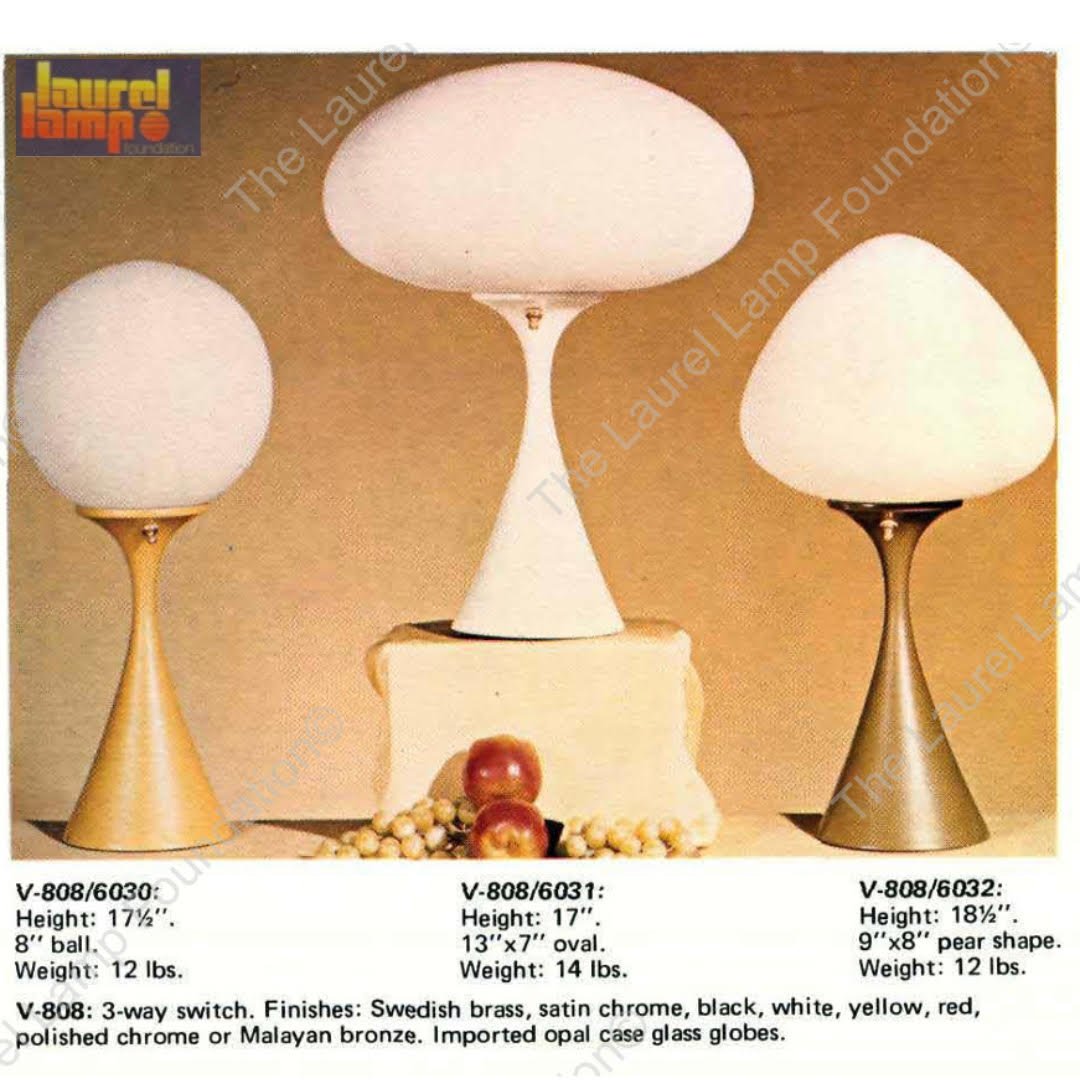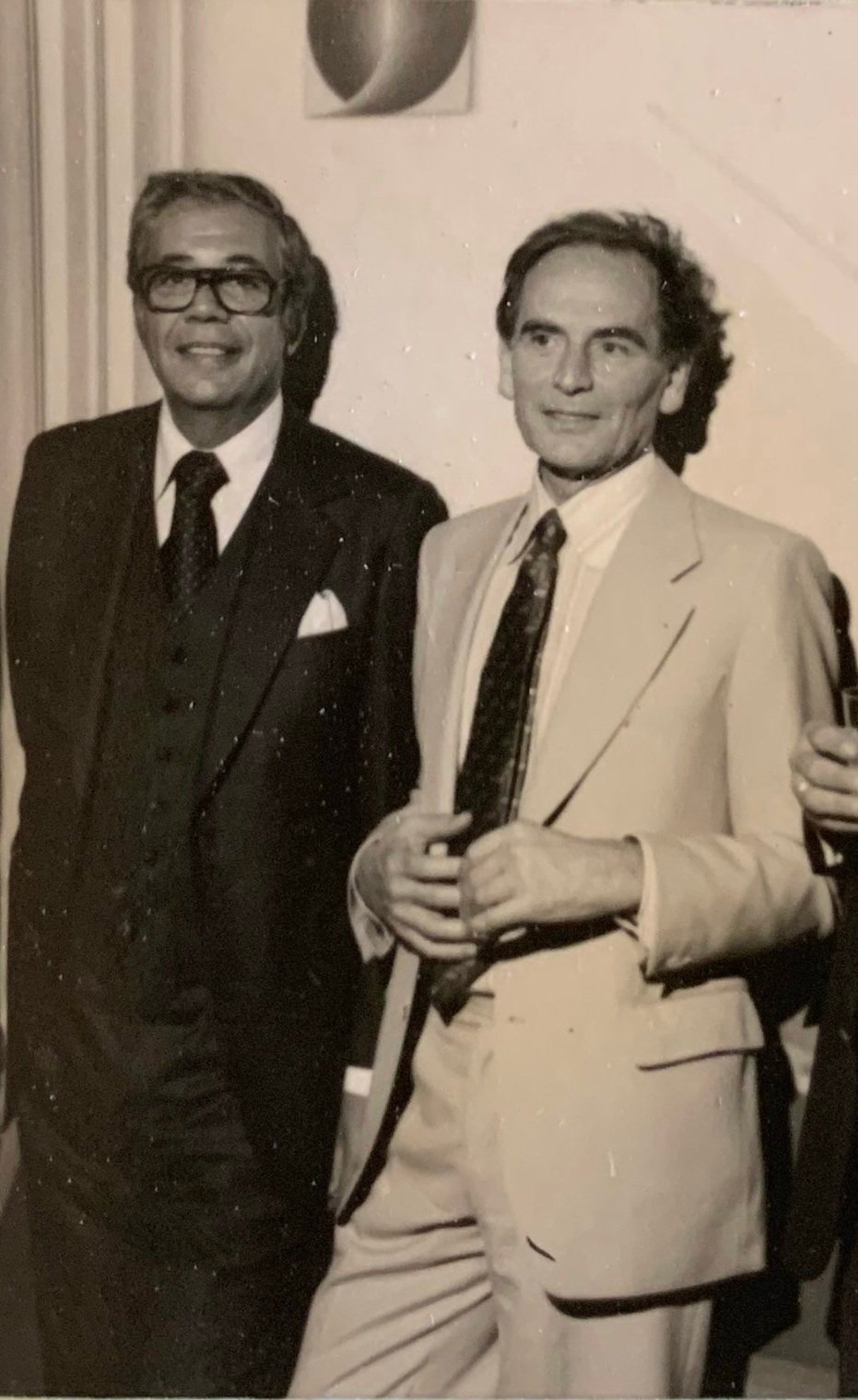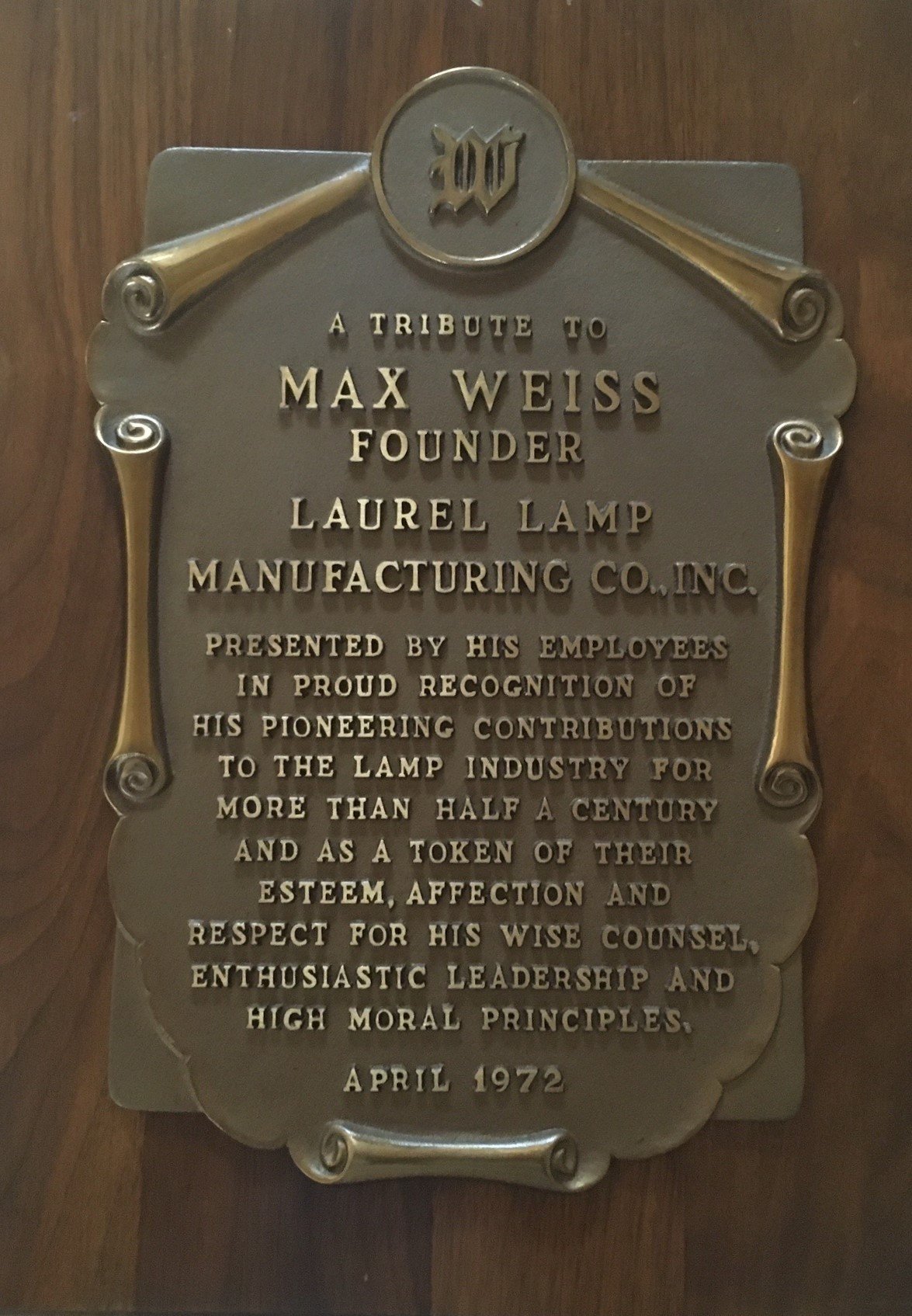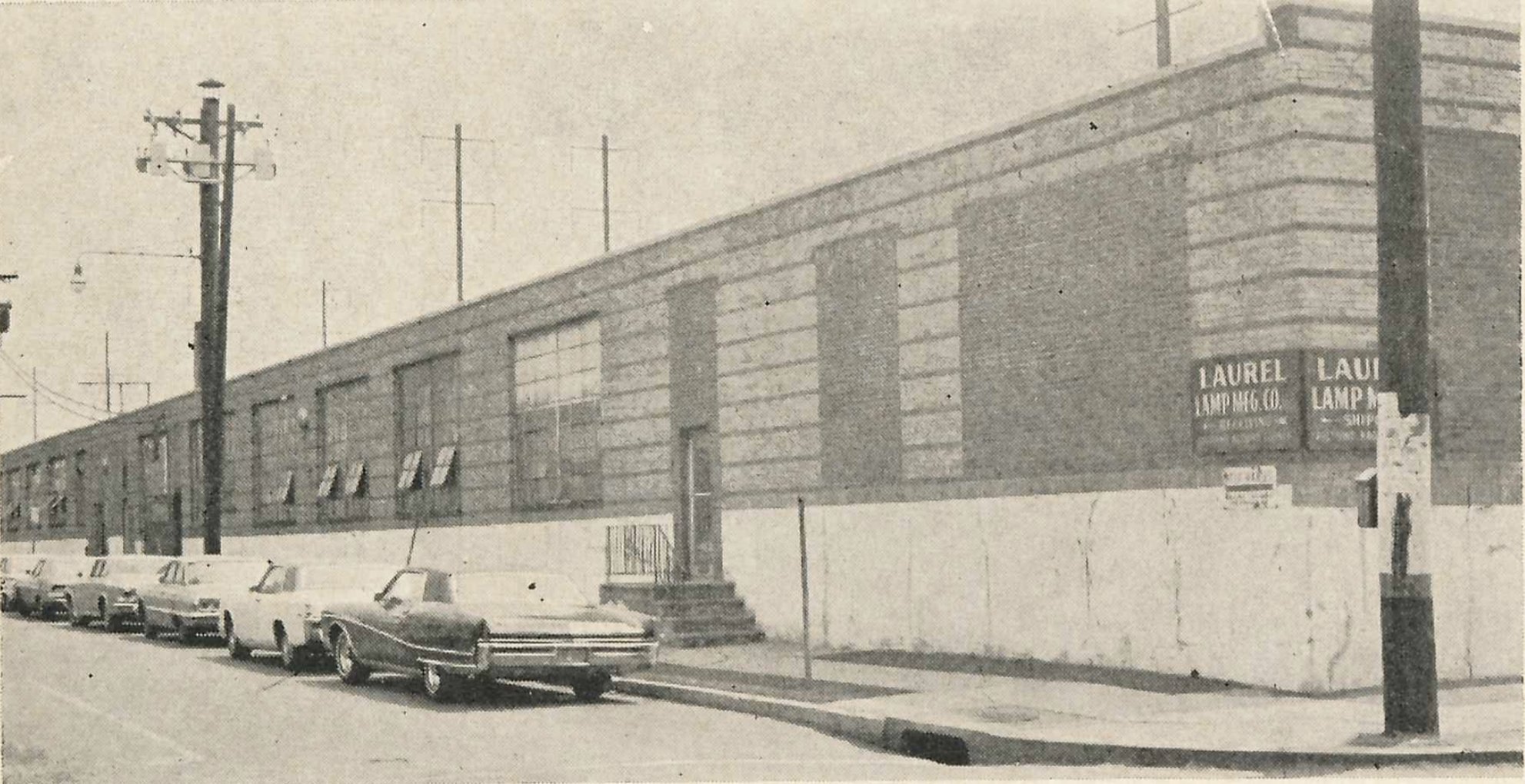
laurel lamp company history
1946-1965
Laurel co-founders Max Weiss (top) and his two sons Harold Weiss (left) and Murray Weiss (right) .
On January 23rd, 1946, Max Weiss and his two sons, Murray and Harold Weiss formed the Laurel Lamp Manufacturing Company incorporated in Newark, New Jersey. Previously, Max Weiss had co-founded the Mutual Sunset Lamp Company, a successful New York City based lighting company, before embarking on this new venture with his two sons.
The name “Laurel” was initially selected as a potential name for the company because it had a distinct and widely recognizable symbol in the laurel wreath, began with the letter ‘L” to compliment the word “lamp”, and was easily understood when said over the telephone. Despite other names being considered, the final decision was ultimately made by Max’s daughter, Natalie (Weiss) Darwin, who settled on Laurel as the company's name.
On July 3rd, 1946, a 20,000 square foot space was leased on the corner of Rome and Magazine Streets in Newark, N.J. in a new building which could be fitted with drainage for a plating room and a concrete spray booth. Remarkably, although significantly expanding its square footage over time, Laurel continued to operate from that same location until it was dissolved in the early 1980s.
In its commitment to the highest standards of production, the Laurel Lamp Company chose to produce and design most components in-house —including casting, plating, polishing, and assembly —with the notable exception of importing specialized glass from Italy, Sweden, and Finland.
In the late 1940s, the luxury department store, B. Altman & Company, placed the first substantial order with Laurel and ran a full-page advertisement in the New York Times that put the Laurel Lamp Company on the map.
In 1951, Laurel obtained a contract with the General Services Administration to produce lamps for the U.S. government while expanding its factory to 31,000 square feet.
During this time period, Laurel predominantly concentrated on crafting luxury lamp designs that encompassed both contemporary and classic styles.
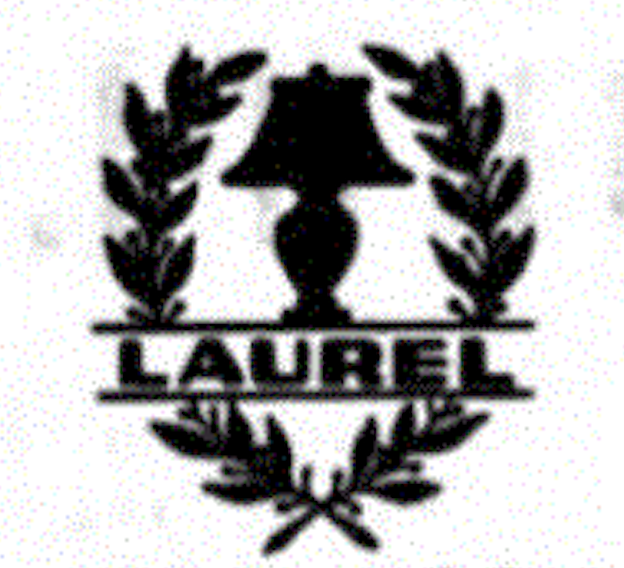
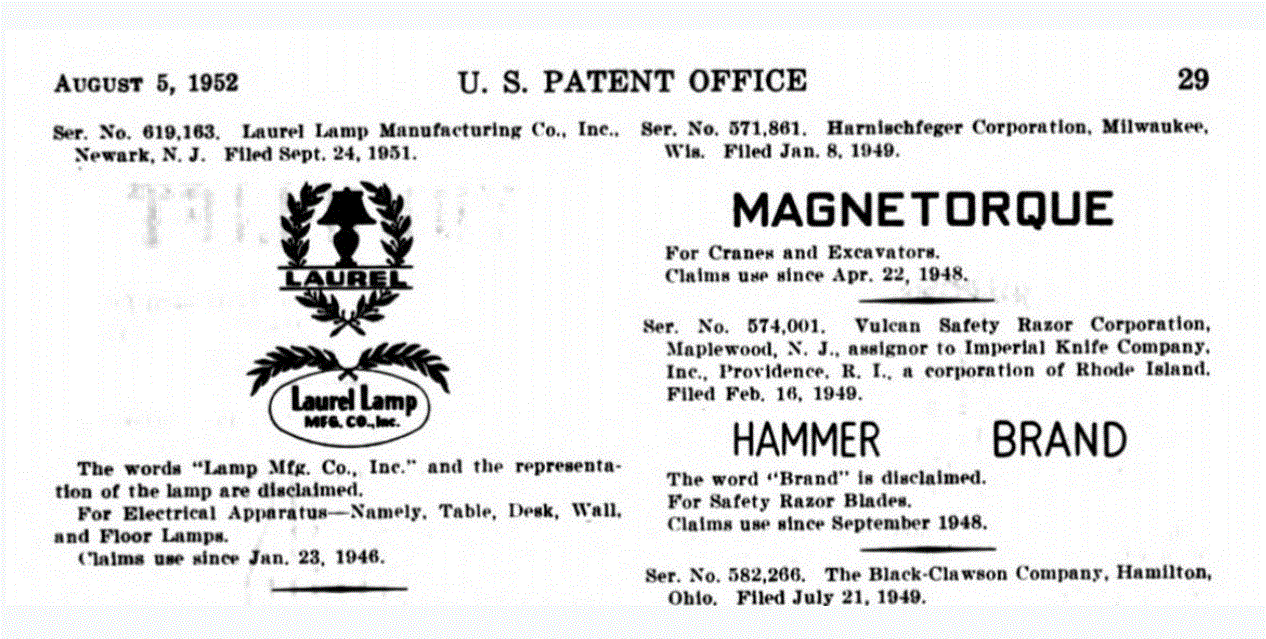
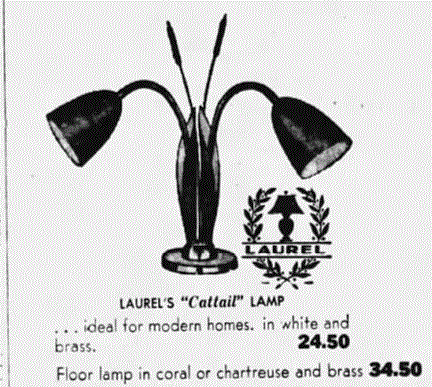
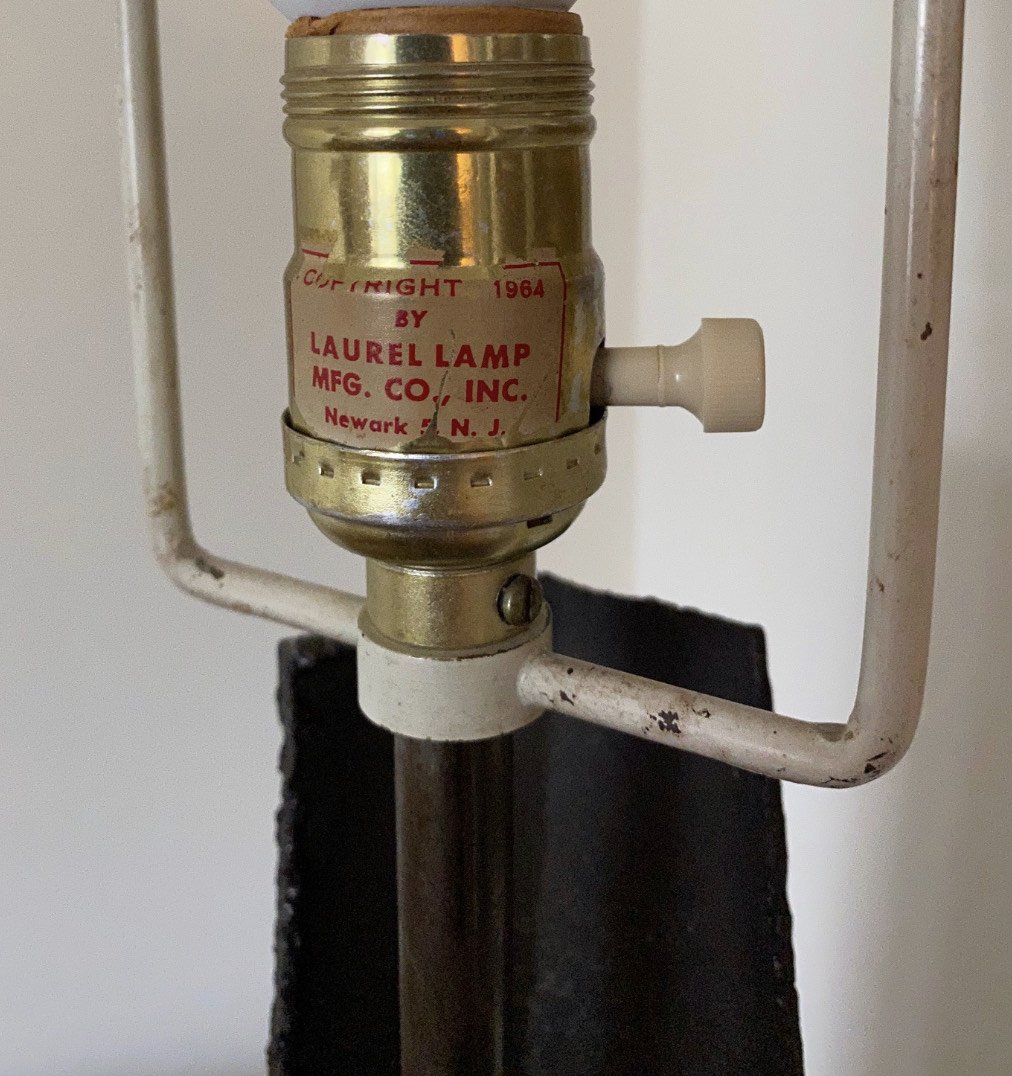
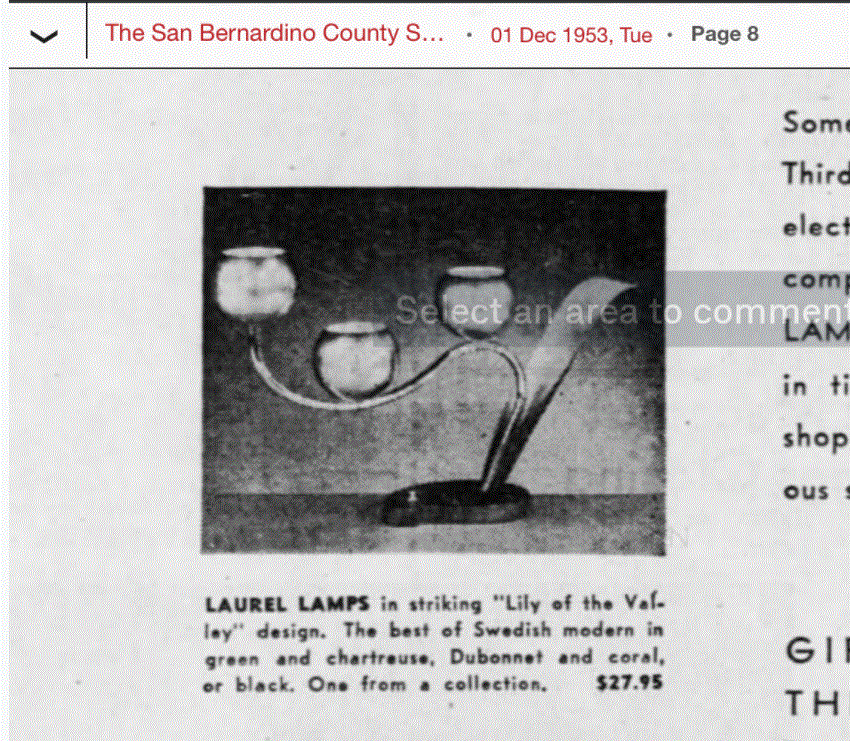
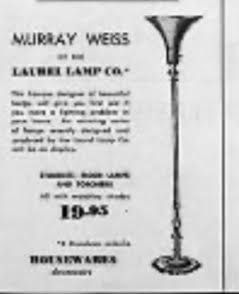
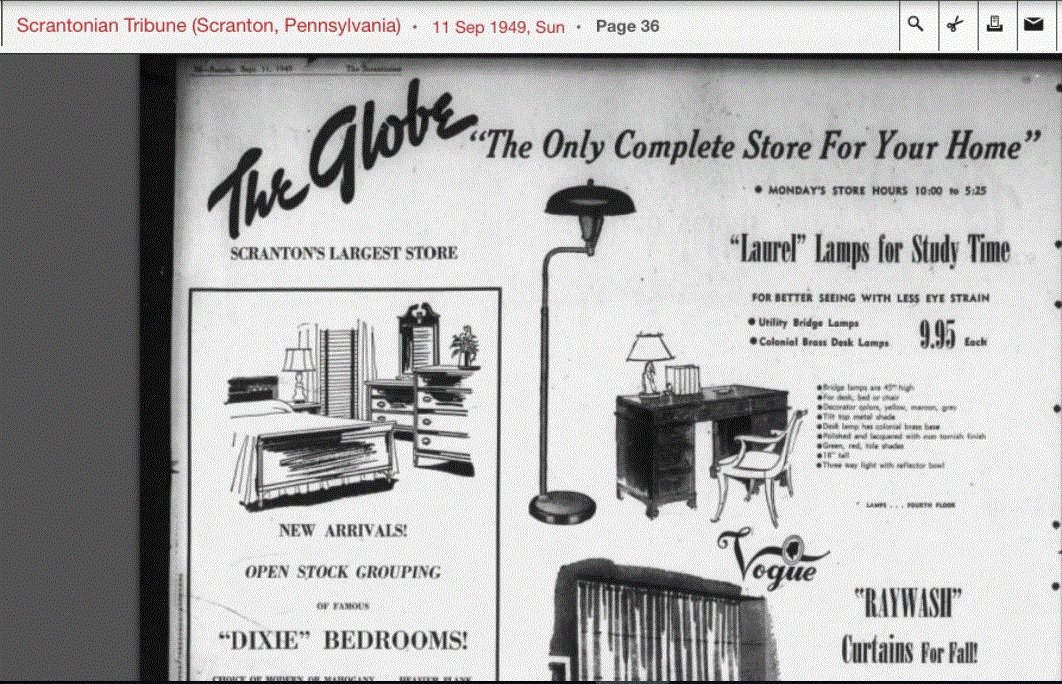
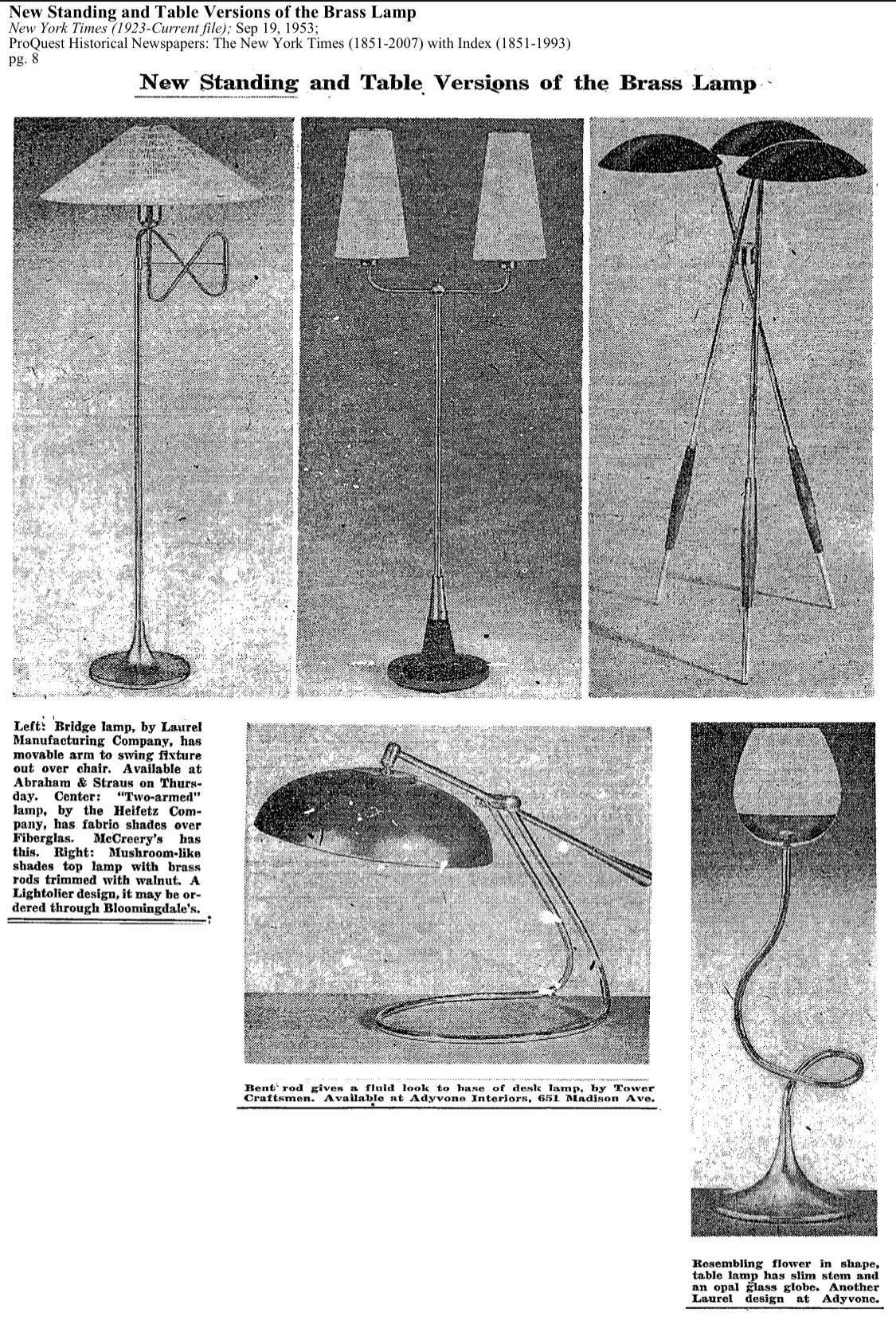
Laurel’s Newark New Jersey factory located on the corner of Rome & Magazine Street which served as Laurel’s headquarters throughout the company’s history.
Laurel Lamp Company logo used during the 1950s with the iconic laurel leaf design.
1965-1970
During the mid-1960s, Laurel played a crucial role in shaping the American mid-century modern interior movement by making high-quality lamp designs accessible to the general public.
Drawing inspiration from Scandinavian and Bauhaus influences, Laurel incorporated distinctive elements like clean lines, organic forms, and a harmonious blend of natural materials such as teak, walnut, and rosewood. These iconic designs not only epitomized the mid-century modern aesthetic but also democratized access to these sought-after styles, paving the way for the widespread popularity of the design movement known for its timeless elegance, functionality, and simplicity.
By 1965 Laurel had showrooms in New York, Dallas, North Carolina, Chicago, & Los Angeles. This same year Laurel released its now iconic “mushroom” lamp in a variety of different styles. Uniquely, these “ac’-cent” lamps were originally were available in 3 contemporary base designs, 3 interchangeable satin white imported case glass globes, and 9 different finishes or woods, giving customers a choice of 54 different combinations.
Popular Science highlighted Laurel’s design for a high-intensity lamp dubbed the “Sprite-Lite” in a 1965 article highlighting its innovative design and electrical efficiency.
By 1968 Laurel had established an additional showroom at the High Point Furniture Market in North Carolina and had a sales team of nearly 50 people. Co-Founder Murray Weiss formally separated from the Laurel Lamp Company shortly before he passed away in 1968.
In March 1969, Laurel’s nationwide reach led to its sale to the Lightron Corporation, a division of Instrument Systems Corporation (known today as Griffon). Under the new ownership of Lightron, Harold Weiss remained as President of the Laurel Lamp Company and continued to propel the company toward innovation in the lighting industry.
A Laurel floor lamp from 1965 (Model #0-762) exemplifying Laurel’s emphasis on mid century modern design aesthetics
Laurel’s iconic “mushroom” lamp (Model No. V-808) designed by Richard Barr and appearing in the 1965 Laurel catalog - Supplement B.
1970-1979
By 1971, Laurel produced approximately 600 unique lamps consisting of 175 basic styles of lamps with variations in finish and shades.
Due to exceptional industrial design planning by President Harold Weiss, the same Rome & Magazine Street factory space had been expanded to over 100,000 square feet with only minor changes needed to the factory floor.
By this time, Laurel’s inventory of lighting included table lamps, floor lamps, desk lamps, pole lamps, piano and organ lamps, stick lamps, torchieres, torchettes, accent “ac’-cent” lamps, arc lamps, swag lamps, mini lamps, task lamps, slide-lights, high-intensity lamps, wall lamps, and sconces, along with other home furnishings.
Throughout the 1970’s, Laurel built a global reputation for innovative, high-quality lighting designs. In 1971, Laurel partnered with the renowned Venitian glass manufacturer, The House of Salviati in Murano, Italy on a line of Murano glass sculptural lamps.
In 1971, the Laurel Lamp Company was the subject of an article featured in Home Lighting & Accessories Magazine commemorating Laurel’s 25th year in business and highlighted its contributions to the lighting industry.
By 1974, Laurel had showrooms in New York, Los Angeles, Chicago, San Francisco, Dallas, and at the High Point Market in North Carolina.
In 1977, Laurel was approached by and partnered with noted French designer Pierre Cardin as part of his venture into the high-end American furnishing market.
The Pierre Cardin Lighting Collection for the Laurel Lamp Company featured over 19 unique sculptural pieces and while Cardin himself did not design every piece, he did have creative input over the entire collection.
Photos of Laurel Lamp pieces produced in collaboration with the House of Salviati from the 1971 Laurel Lamp catalog.
1977 Laurel Lamp catalog page introducing the Pierre Cardin Lighting Collection for the Laurel Lamp Company.
1979-1983
Laurel Lamp catalogs from 1980 including two supplemental catalogs and a contracting catalog for wholesale buyers.
Laurel flourished under the leadership of president and co-founder Harold Weiss until 1979 when representatives from Laurel’s parent company, Instrument Systems, began interfering in the day to day operations of Laurel. Laurel Lamp designs during this period heavily embraced postmodern styles including extravagant designs with the the use of materials like acrylic and lucite, travertine, colored glass, and a mix of brass and chrome accents.
On January 3, 1979 Instrument Systems terminated Mr. Weiss’s contract and Henry Jampol was named president of the Laurel Lamp Company.
Mr. Weiss’s firing later led to litigation which was settled by Instrument Systems on the eve of trial in the fall of 1979.
Laurel, under new management, became absorbed in layers of subsidiaries, as well as ownership changes, which led to its eventual disappearance from the home furnishings market within a few years.
Newspaper articles show Howard Wolff was the president of the Laurel Lamp Company in 1981.
Laurel’s last corporate annual report to the State of New Jersey was filed in 1981. Soon thereafter Laurel’s corporate status was revoked and the company ceased all production.
In 1983, Westwood Lighting Group purchased the remainder of Laurel’s assets before folding the brand into Westwood’s existing product line. Some original Laurel designs were reproduced and sold under Westwood advertised as “Laurel” in the mid 1980s.
To learn more about the Laurel Lamp Company’s predecessor company, the Mutual Sunset Lamp Manufacturing Company click here
Underwriters Laboratories manufacturing label found on a Laurel Lamp from the mid 1970s certifying the safety of the electronic components.
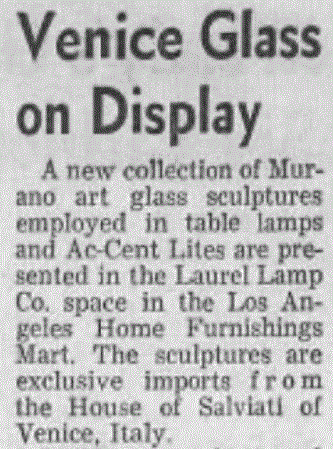
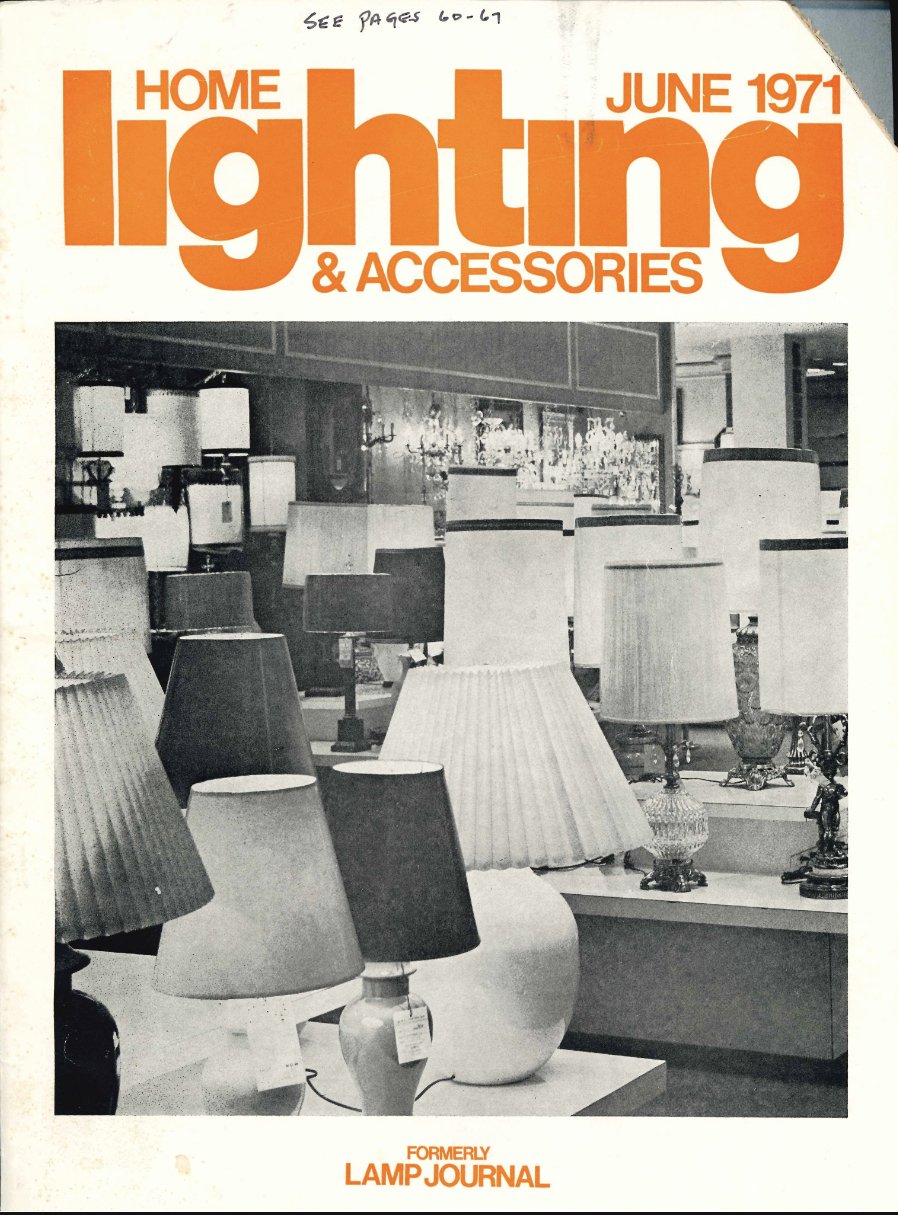
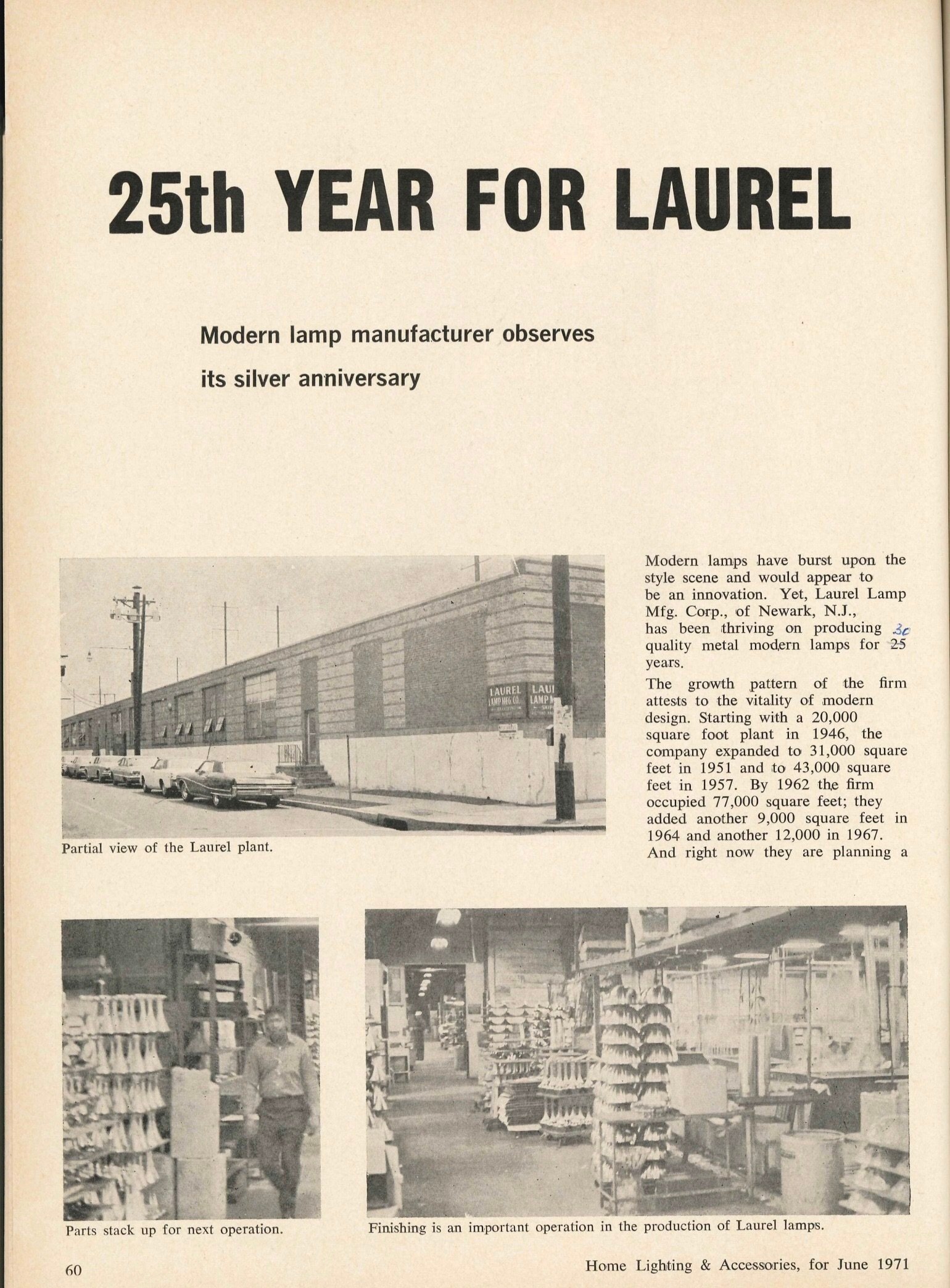
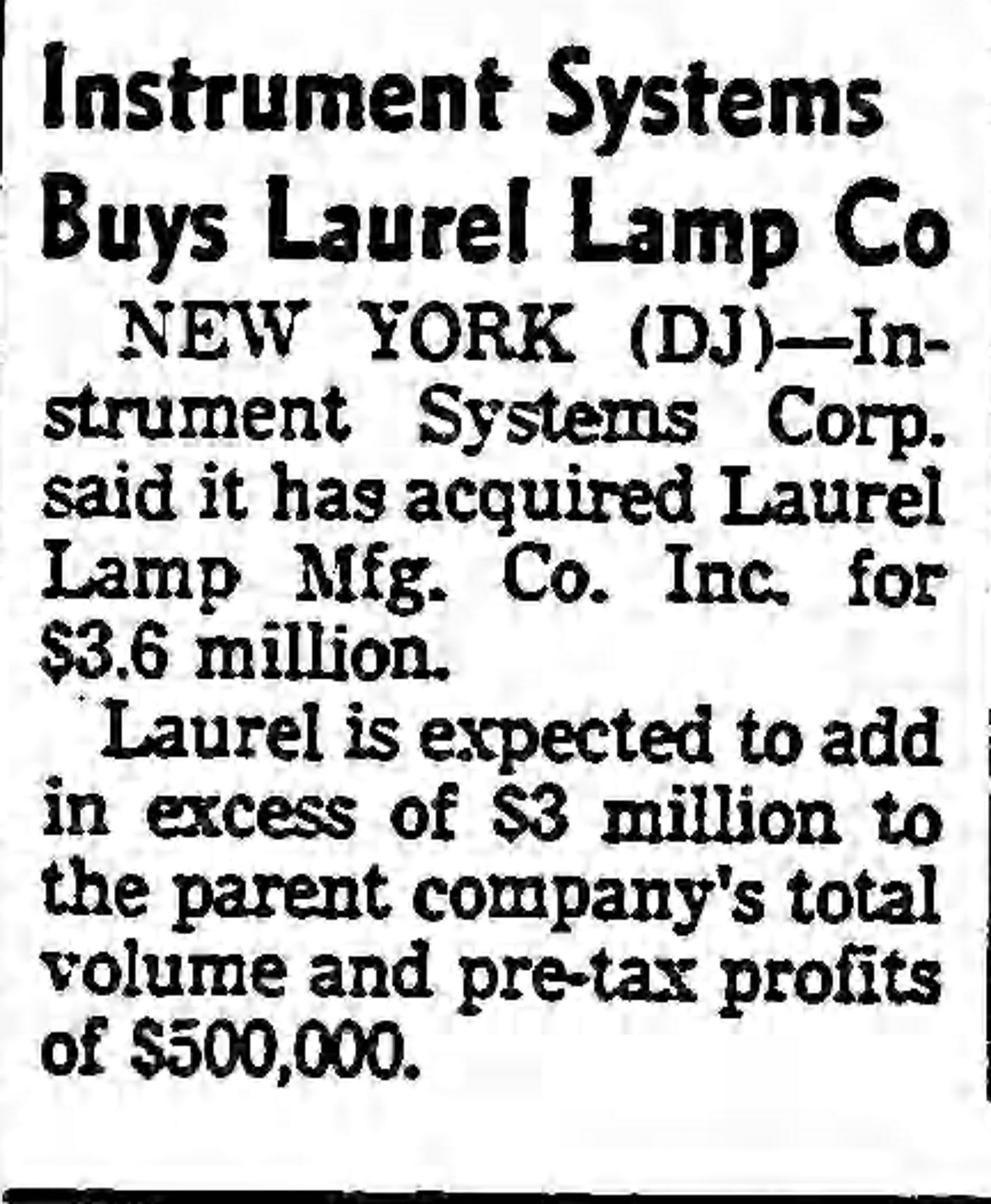
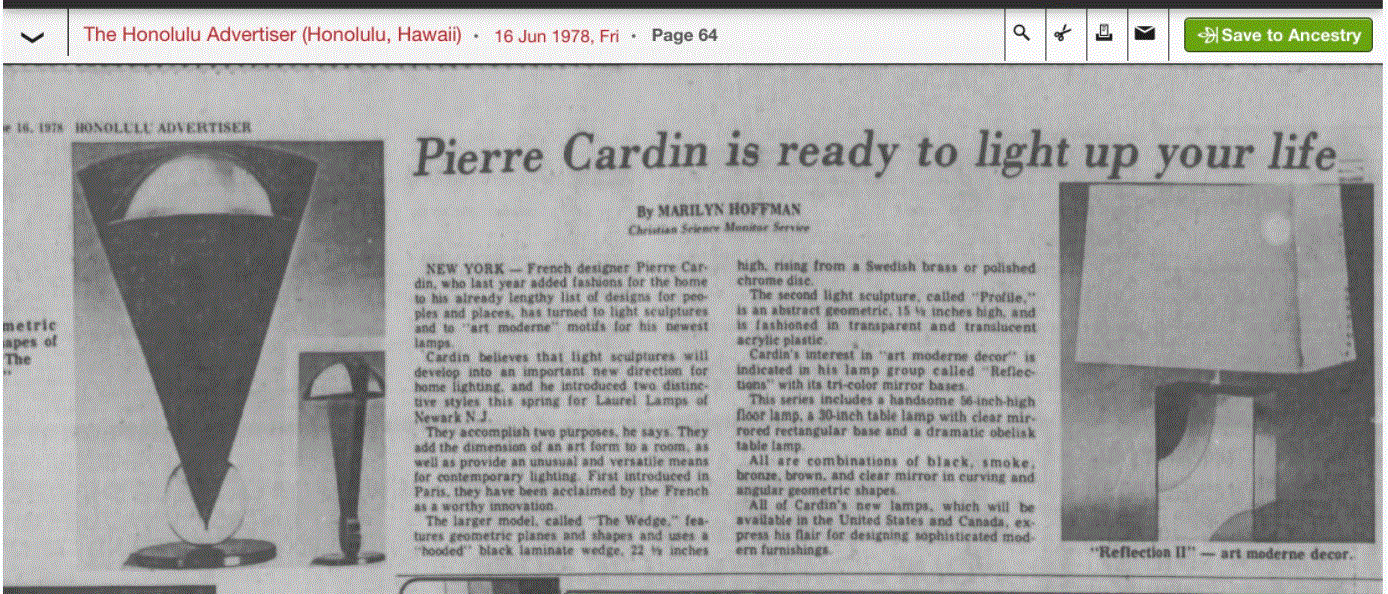
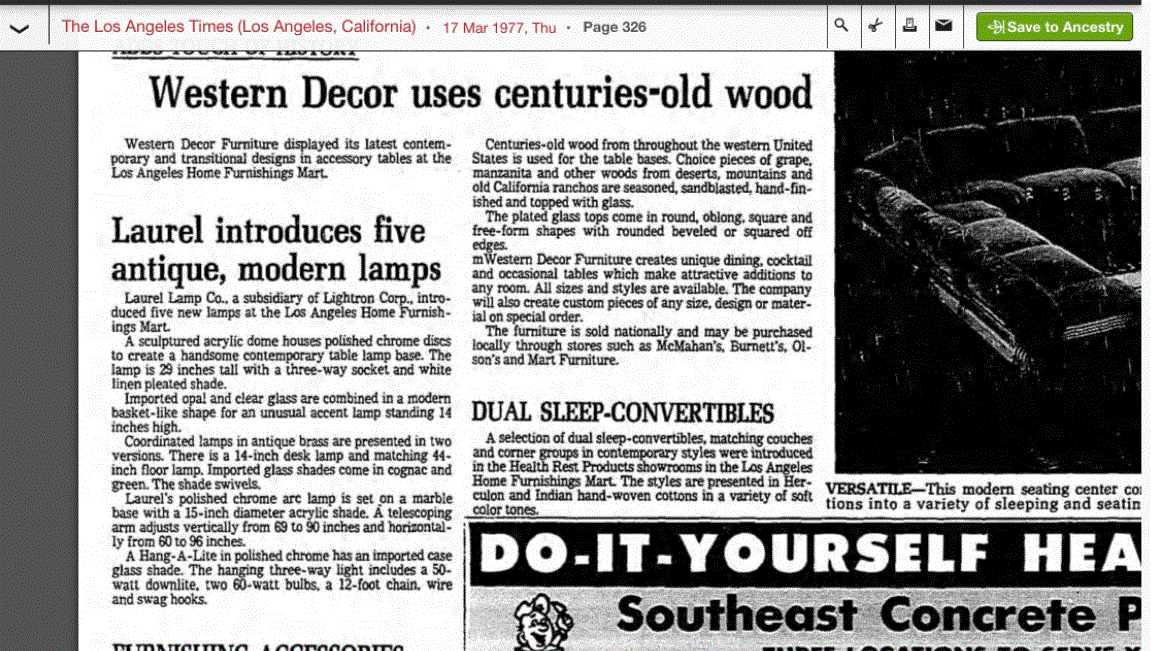
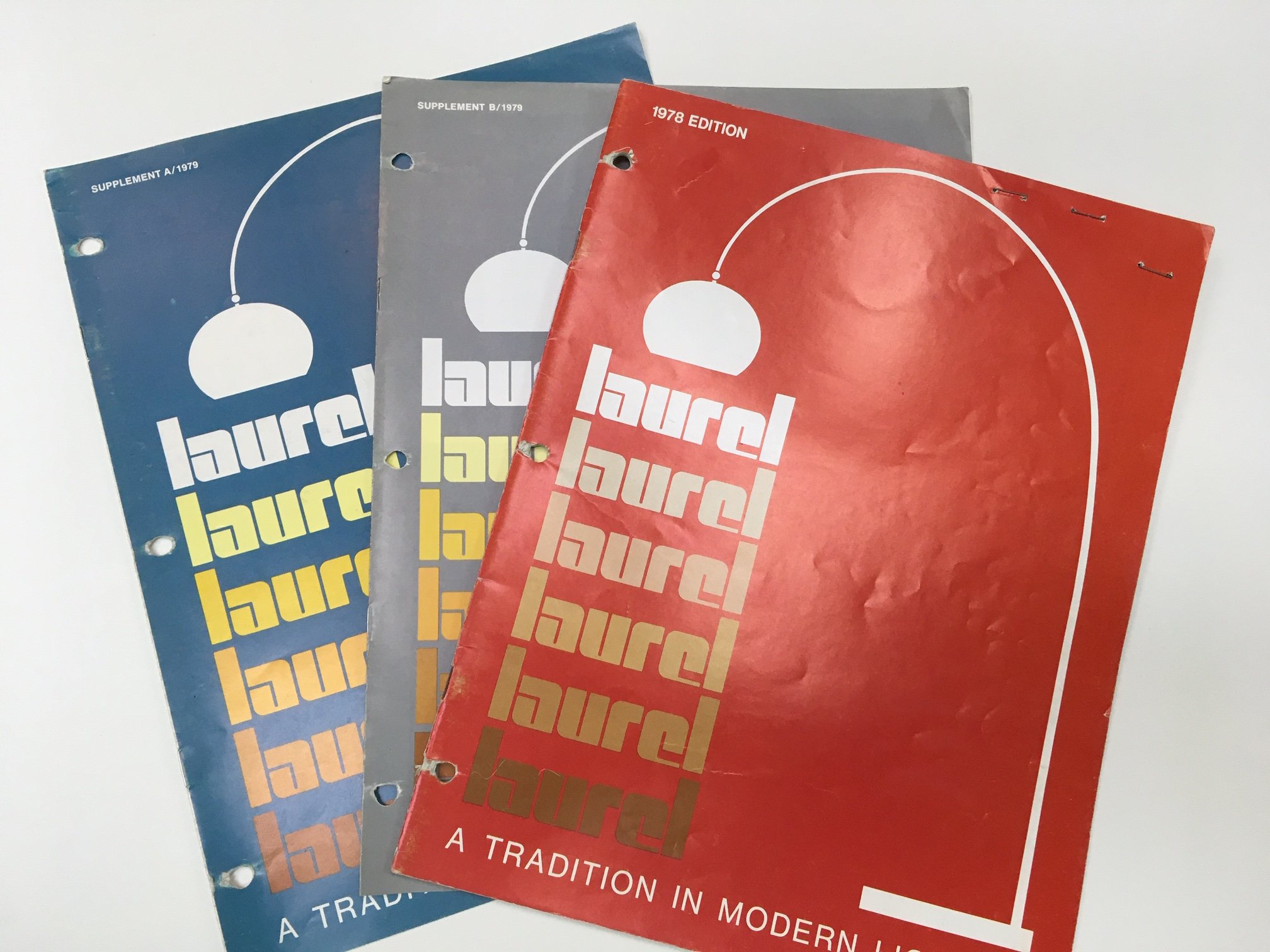
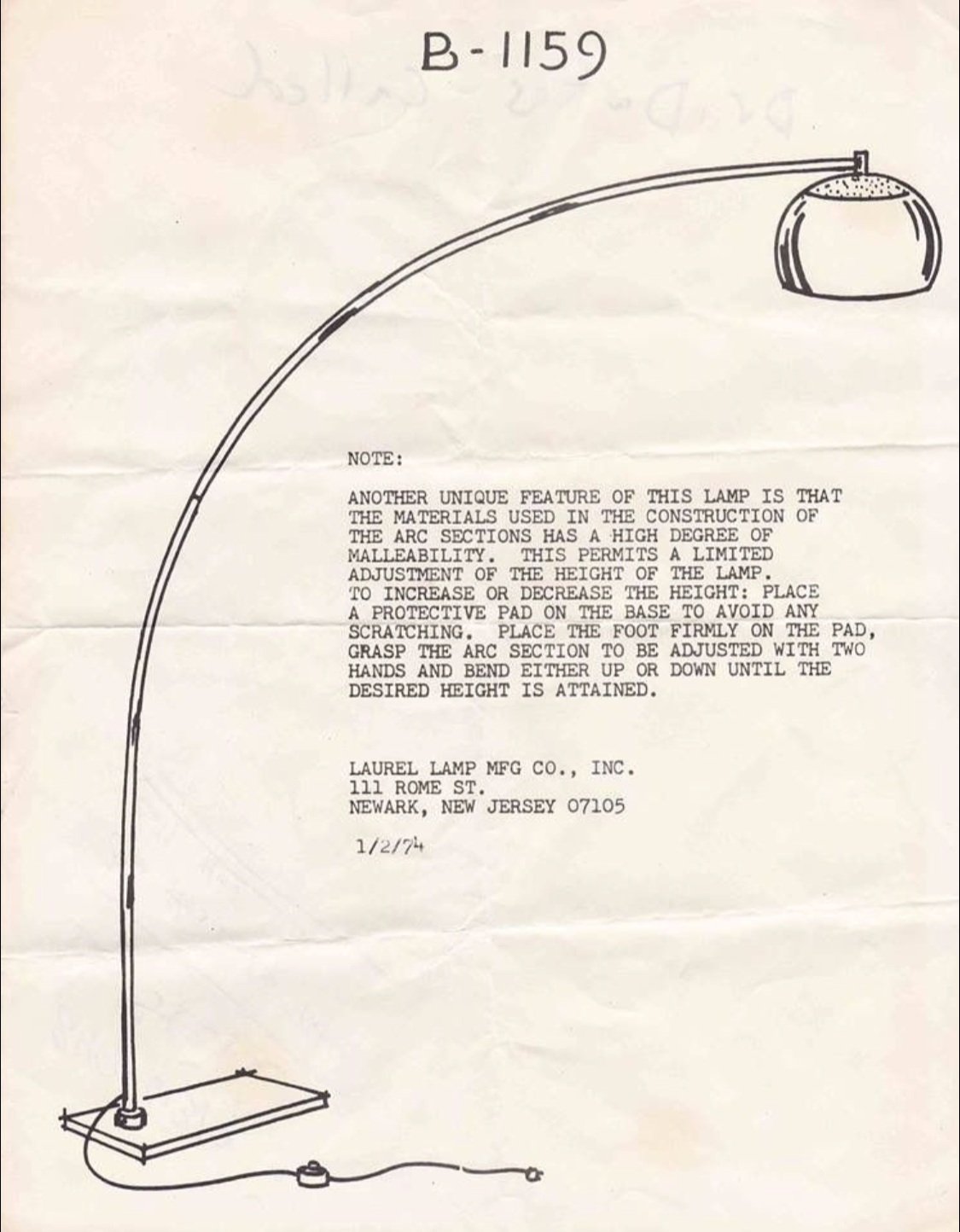
Laurel Lamp Company Founders
Laurel Lamp Company Founder’s Max Weiss (top) with his two sons Harold Weiss (left) and Murray Weiss (right)
Photo of Murray Weiss courtesy of Natalie (Weiss) Darwin
In REMEMBRANCE
Max WeiSS
12/9/1891 - 1/22/1982
Max Weiss, co-founder and patriarch of the Mutual Sunset & Laurel Lamp Manufacturing Company
Harold J. Weiss
12/5/1915 - 12/19/2014
Harold Weiss Obituary, Chicago Tribune (12.21.2014)
Murray Weiss
10/19/1918-12/9/1968
Murray Weiss, Obituary, New York Times (12.11.1968)
Plaque presented to Max Weiss, one of the Laurel Lamp Company’s original founders, in April 1972 by his employees.
(Photo courtesy of the Weiss Family)


